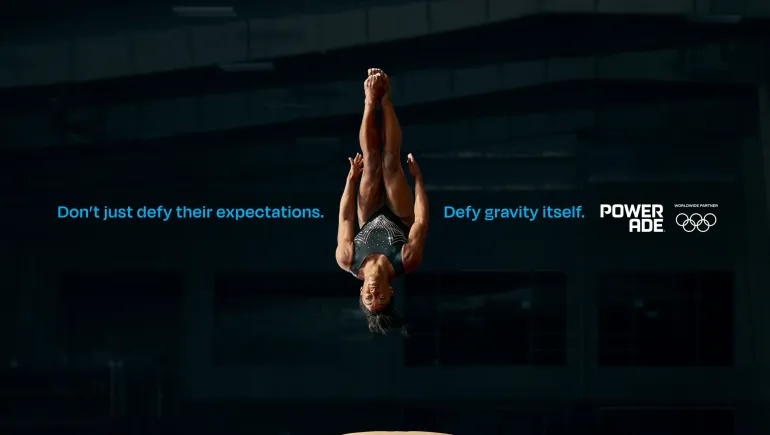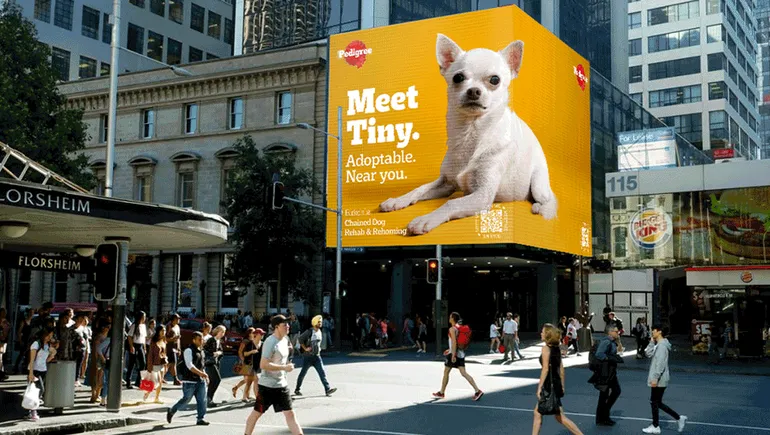
Why Domino’s is awarding half a million dollars in snow plowing grants
Domino’s today (Dec. 4) announced plans to award $500,000 in grants for snow plowing to ensure that carryout customers can access the pizza chain despite the worst of winter weather. Consumers can submit their zip code to apply for a grant, and the chain will dole out $25,000 to 20 cities throughout the season.
The “Plowing for Pizza” program is already underway in Erie, Pennsylvania; Marquette, Michigan; and Manhattan, Montana. The other award-winning cities will also receive winter hats, scarves and other branded, season-specific merchandise, plus $200 in Domino’s gift cards.
The campaign follows several marketing efforts from the chain that have focused on making carryout and delivery as easy as possible for consumers, including an Apple CarPlay integration, a Pinpoint Delivery system and a series of “Emergency Pizza” offerings. The latest effort is the spiritual successor to a 2018 campaign, “Paving for Pizza,” that saw Domino’s repair roads in municipalities across the country to protect the integrity of its pizzas on the drive home.
Marketing Dive spoke with Kate Trumbull, Domino’s chief brand officer, and Matt Talbot, co-founder and chief creative officer at agency of record WorkInProgress, about how “Plowing for Pizza” came together, the challenge of balancing different priorities in the brand’s ads and more.
This interview has been edited for clarity and brevity.
MARKETING DIVE: How did Domino’s and WorkInProgress develop “Plowing for Pizza?”
KATE TRUMBULL: I think about “Paving for Pizza,” so this is kind of a second act. With both of those, we’re always looking to prove our obsession with ensuring nothing gets in the way of our customers and hot delicious pizza, and that no one goes as far as Domino’s in the name of hot pizza. I think actions like this really mean something more to consumers — you don’t see it coming, it’s really unexpected.
There are so many places to get pizza, but we think there are ways to earn customers’ loyalty. We’re not only giving you the best, hottest pizza experience and showcasing it through work like this, but we’re taking relevant brand-building actions that matter to consumers.
We always say people like you for what you say, but they’ll love you for what you do. That’s the reason why the work is grounded in similar insights to “paving” around convenience and ease for consumers. [Carry-out consumers] are willing to do the work in the name of bringing home the best possible meal. We wanted to find other ways to give them the ability to gain control in situations when they feel out of control.
MATT TALBOT: We are continuously trying to prove our commitment to carry out. In the current space, plowing being a spiritual successor to paving is a way to show how seriously we take the experience.
Some of the ad creative was shot last winter. How usual is that long of a timeline?
TALBOT: Creatively, we’re always looking at both the short-term wins and then long-term planning. We’re not afraid of ideas that take a year or years to do, whether it’s building a car or building a piece of technology or finding roads. I think that is unique and has allowed us to do more meaningful and groundbreaking things because we can invest in the long term. This idea is not as extreme, but it still takes a lot of work to communicate with these cities. You have to build in that time, otherwise you just can’t execute things like this.
TRUMBULL: Sometimes you have to and want to do the short-term things to be relevant with what’s happening in culture in the moment. But I think when you’re trying to do things that are meaningful actions and not easy gimmicks — everyone can do easy gimmicks — that is not short-term. There’s no way around it. You want to be looking at trends and culture in the moment and not be afraid to move quickly. But at the same time, there are things like Pinpoint Delivery; that kind of technology doesn’t happen overnight, either.
What is the challenge of messaging around some of those tech developments?
TALBOT: We run a lot of 15-second spots, so sometimes, it’s just a time constraint. But for us, it’s not always about whether they will use the technology or whether it has to be instructional or drive adoption: it’s about making the brand top of mind and memorable.
When you frame it that way — versus walking you step-by-step on how to get the technology or how to use it — it’s about driving traffic to the Domino’s website and the app, then people can always find out more and research more. But we’ll have the brand break through.
We often say “experienced by few, seen by many” with a lot of the actions we do. That’s a good lens. If you only do things that everyone can experience, you can’t improve your true commitment. But at the same time, we can do things like Emergency Pizza that basically everyone can experience. It’s always a mix what role each of those things plays on your calendar.
Speaking of Emergency Pizza, how have efforts like that affected your data collection and loyalty program?
TRUMBULL: Any marketer will tell you data is important and helps you do a better job marketing to consumers and driving frequency. Asking consumers for data, you better be giving them something meaningful in return. We worked really hard to improve our loyalty program. Other loyalty programs keep getting worse, right? They’re just trying to maximize profitability and often that comes with a downside to consumers. We were really proud that we made a better program, you can get more rewards. You have to make sure that you’re giving benefit to the consumers as you get benefit, too.
Domino’s has dabbled in nostalgia, whether around “Stranger Things” or the return of the Noid. How does the brand think about that tactic?
TALBOT: While “Stranger Things” as a property has nostalgia elements, we partnered with them because it was a way to reach an audience we don’t normally reach, that Netflix audience, which is a younger, more forward-looking audience. Even that was less about nostalgia for nostalgia’s sake: it was tied to Mind Ordering. With the Noid, that’s something that’s our own IP, our own nostalgia, and it contrasted with something that was modern in autonomous delivery. We were using our own nostalgia versus a borrowed equity.
In general, we are more hesitant to rely on nostalgia — we like being forward-looking. We like using it very judiciously as a brand. I think others use it heavily in our space or rely on it too heavily. If you can leverage nostalgia in a way that’s meaningful, that’s how Domino’s likes to use nostalgia: tied to an action. There’s so much nostalgia around pizza night and what that means, how meaningful that is and why we have to provide the best value that we can.





